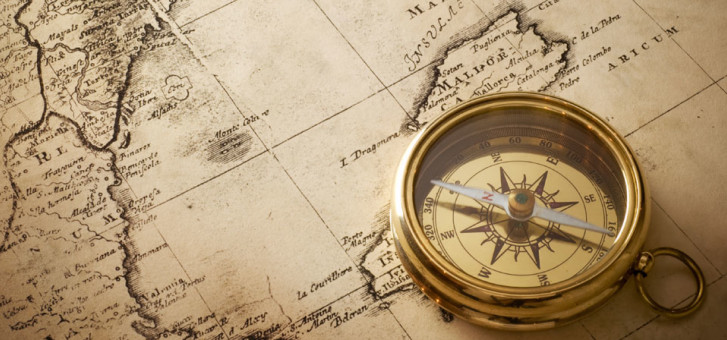St Andrews is a fascinating historical town.
Situated on the eastern sea-coast of Scotland, it seems that while its past has so many great events, it may be best known today as the home of golf and the “Royal and Ancient” club, regular venue for the British Open.
This town is named after Andrew, one of the 12 disciples of Jesus and brother of Peter. The legendary story claims that some of his remains were brought here from Constantinople. Legend has it that St Regulus, a missionary from the Columban school on the Isle of Iona, brought Christianity to St Andrews toward the end of the sixth century. One thought says that when the Columban Celtic Church was displaced in England at the Synod of Whitby, it would be more appropriate to have Peter's older brother as the patron saint! Here at St Andrews some of the scenes for the 1981 Oscar-winning Chariots of Fire were filmed. And even if visitors do not get to hear their names called out over the loudspeaker to tee off at the “home of golf,” they often patronise the golf shop buying golfing items for them and their friends.
Back in 1457 the Scottish Parliament passed a law prohibiting the playing of golf on Sunday—and encouraged the citizens to attend church and practice archery, a more useful skill for military purposes.
At the time of the Reformation, St Andrews had the largest church in Scotland. Building the great cathedral commenced in 1161 by a Bishop Arnold.
However, the consecration of the cathedral was not until the year 1318. It is reported that King Robert the Bruce rode his horse up the central aisle. It was a massive church, and through the years both fire and storm have left their marks on the great building.
Today tourists still climb St Rule's Tower—once part of the cathedral complex—and find a great view across the town and castle. The name St Rule's comes from an association with St Regulus.
Neither the times nor the church of St Andrews were conducive to individuals who did not conform to the prevailing religion.
In 1433, a man named Paul Craw was burned at the stake in Market Street.
Perhaps the two best known martyrs were Patrick Hamilton and George Wishart. Hamilton died a slow, agonising death by fire outside St Salvators—part of the university— in 1528. Some 18 years later in 1546, Wishart was similarly put to the flames outside St Andrews Castle.
These sites have seen the initials of the martyrs placed among the stones of the roadway.
Just above the entrance to the historic golf course, on the green grassy headland overlooking the sea, is a high monument to the martyrs of St Andrews, built in 1842. There are inscriptions to Paul Craw, Patrick Hamilton, George Wishart and a Walter Myln (1558).
These men, who were martyred over a period of 120 years, have left behind a legacy of religious freedom. It is a fascinating story.
John Knox was born around 1514, at Haddington, some 30 kilometres east of Edinburgh. The moving moment in his life was the martyrdom of George Wishart in 1546. He attended church at the Holy Trinity Church, located on South Street beside Church Square.
Having intimated that the preaching could be better, he was challenged to demonstrate the next Sunday. He did, using the prophecies of Daniel 7 as the text for his first sermon.
St Andrews Castle was first built in 1203 as a strong fortress and, of course, a residence for the bishop. Its grounds feature part of the cliff above the sea, which is the “Bottle Dungeon”— shaped like a bottle and impossible to escape. Here many Protestants were incarcerated.
The same year as John Knox came to prominence, the Protestants took the law into their own hands. Gaining access to the castle, they seized Cardinal Beaton—who had ordered Wishart's death—and murdered him. They succeeded in holding the castle for about a year. Knox joined the Protestant defenders in the castle during this time.
The Earl of Arran besieged the castle and commenced to dig a “mine” under the castle walls—intending to set a charge and blow up that part of the castle. The defenders, on hearing the digging, began to dig a “counter-mine” to undermine the work of the attackers.
It is still possible to see these shafts and try to visualise the history of St Andrews today.
Finally, the castle was freed from Protestant control by the intervention of the French fleet, which proceeded to bombard the castle from the sea. Knox, among other defenders, was exiled to France and made to slave in the galleys of French ships. Knox spent some nine months of his life as such a slave.
In 1559 the great cathedral was ransacked by a Protestant mob, incited by the preaching of Knox. Today the ruins of the Cathedral indicate the place of prominence this church held prior to the Reformation.
In the days of the Covenanters— those Presbyterians of Scotland who had made a “covenant” with God and resented the attempts by King Charles II after the Restoration to impose Anglican rites on Scottish congregations—took things into their own hands. In 1679, Archbishop James Sharp was murdered by covenanters some five kilometres outside the town at Magus Moor.
This act brought on the “killing times” of 1680–85, when the blood of some 18,000 Scots stained the heather and moor. It is amazing how one dastardly deed precipitated so many more! Today, the Tourist Information Centre for St Andrews Castle has excellent displays explaining the history of the Castle and town. But what can we learn from the turbulent history of this Scottish town? First, the people from St Andrews were passionate about their beliefs. If we could emulate them in this while granting all people the opportunity to worship as they wish, the world would be a happier and holier place.
Maybe we also would discover that the Bible, which meant so much to previous generations, could guide us today. But whatever our beliefs, the use of force to make others believe as we do should never be entertained. It didn't work in St Andrews—and it won't work today.
May the courage and commitment of these past reformers and martyrs inspire a new generation to stand for the lifechanging beliefs concerning Jesus Christ and the Holy Scriptures—which are worth committing to.




